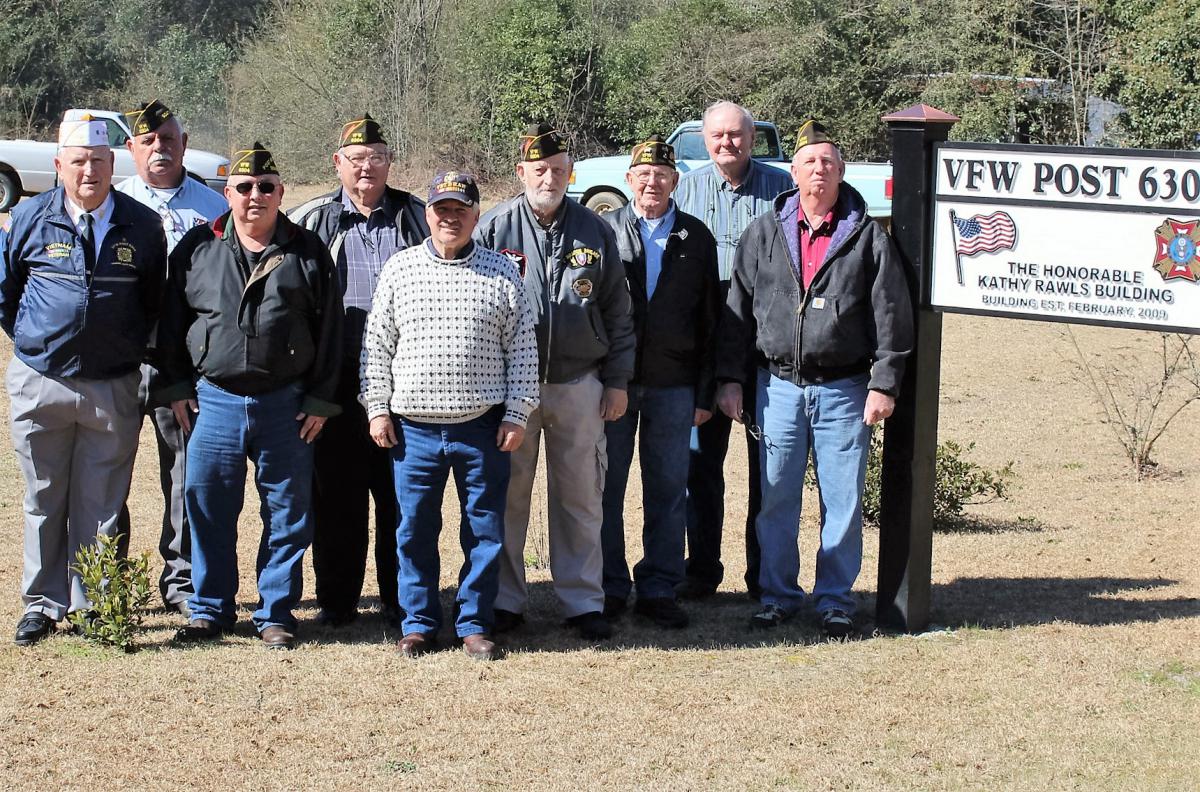
From the Wagener Monthly, by Valerie Sliker
Wagener VFW Post 6304 held a flag burning ceremony on February 27, 2016 in the Post’s yard. Post Commander John O’Cain, Past Post Commander Charles Beam, Jr. Vice Commander Joe Quattlebaum, Chaplain Tony Day and several others participated in the extensive ceremony to properly dispose of nearly twenty retired American Flags.
Worn or damaged flags should be retired in a dignified, respectful manner. The VFW Post 6304 accepts flags for retirement to be burned annually. You may deposit worn flags in the red, white and blue mailbox located near the Post’s parking lot.
At the ceremony, each flag is folded properly inside the Post building prior to burning. As members of the post arrived, they jumped in and began folding or gathered around the fire barrel outside to start the fire.
Charles Beam, retired Airman and past Post Commander, explained the flag burning ceremony: “We have to take the flags to the top of the flagpole, raise them briskly and lower them ceremonially. The Star Spangled Banner is played as we are raising the flag; Taps is played when the flag is lowered. When the old flags come down off the flagpole, we fold them properly, walk them to the burn barrel in the folded position, then they become slightly unfolded when thrown into the fire. We take the ashes from the barrel, put them in Mason jars and bury the jars under this tree in the VFW Post 6304 yard.
“Many people aren’t aware of the proper etiquette for the American Flag. Something people don’t know is that if you’re sitting in an audience, looking at the podium, the American Flag is always to your left. It is brought in on the right and has to cross over to be placed. The POW or State Flag would be on the other side. Another thing people may not know is that if the American Flag is flown at night, it has to have a light on it.
“There are so many ways you can disrespect the flag. You can wear the flag or spit on it or not stand at attention with your hand over your heart when the Star Spangled Banner is being played and the flag is being recognized. The flag is dear to all of our hearts, especially the military.
“The enemy knows the way to disrespect us is through the flag. When you’re in combat, the flag is always brought out, if you can crawl, you bring it. If you can move and you’re the last survivor, you try to bring the flag out.”
Beam spent 23 years in service, retiring in the early seventies. His final job in the Air Force was as a flight engineer on the C-5 A, the world’s largest cargo aircraft at the time.
Because the American Flag is more than fabric and thread, because great sacrifice and national pride are stitched into its stars and stripes, a United States Flag Code was established to formalize and unite a set of instructions for handling and displaying the American Flag.
The United States Flag Code dictates the size of your flag’s pole, when and how to fly the flag, weather conditions for flying the flag, the position of the flag when unfurled, the order it is displayed with other flags, how to wash and repair the flag, how to fold and carry the flag, and how to properly retire the flag.
If you own a flag, you should know the Flag Code. You may acquire a copy of the United States Flag Code from any VFW Post or online at USFlag.org.



